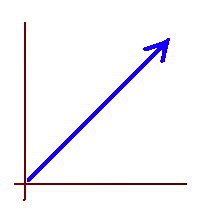Advantages of using Mayan and Roman numerals
When it comes to memorizing the multiplication tables, each child has his or her own pace. Some children find it easier than others to memorize the lists of numerical facts that make up the multiplication tables. Others need longer practice periods, maybe with the help of flash cards. Rote memorization is not everybody’s best act. Some children find these dry memorization exercises burdensome.
Here I offer a suggestion to help third and fourth graders who are not into rote memorization, to gain a better grasp on multiplicative manipulation of the higher digits.
The main idea is using the distributive property of multiplication over addition to calculate the result of a product of two “big” digits by breaking one of the “big” factors into smaller ones, doing two smaller multiplications, and adding up the partial results at the end.
The essential keys for this approach to be successful are:
First of all, do not even mention the phrase “distributive property.” That’s a big no-no. Do not do it. Show by example only. At this stage children do not need to know there is such a thing as a distributive property. It would be a waste of time. Avoid the confusion. Just do it. Show them how it works but do not try to explain why. The best way to understand why it works is for them to see how it works, period. Do not say aloud any abstract names like “property,” much less “distributive.” Stick to the numbers.
Second, use a standard “breaking scheme.” The number five is an excellent stepping-stone in this process. It is very natural for a variety of reasons. Mainly, because five is half of ten, the base of our numerical system, plus we have five fingers in each hand, so it is very easy to break any higher digit as the sum of five plus a lower digit. Children accept this fact very easily. Furthermore, the multiplication table of five is one of the easiest to remember.
Third, –and this is very important– spend enough time (at least half-an-hour) in a preparation period showing them, or reviewing with them, how to write numbers using Roman numerals and Mayan numerals. Do this before getting into any multiplication practice. This specific type of preparation has a dual purpose. On the one hand, it lowers their anxiety level. You have to understand they are under pressure. Their parents are at least concerned, maybe even worried. That is why they hired a private tutor in the first place. The child knows he or she is not doing great in the class when it comes to memorizing the multiplication tables. Some children may be even beginning to have some dents in their self-esteem, thinking that perhaps there is something wrong with them, or that they are not good at math, or whatever. The main idea in their head at this time is “multiplication is hard.” So when you –the expert– come along and start working with them doing lists of Roman and Mayan numerals, they go “Oh! This is really not that hard. This is easy.” Some children actually have fun with these numerals. Some prefer Roman numerals, while some prefer Mayan ones. The main point is now they are relaxed, at ease, and working with something they understand much better than the monolithic multiplication tables. That is the first goal of this preparation. The second purpose is for them to realize, or remember, or reinforce the idea of just how natural is the use of the number five as a breaking point, or a stepping-stone. Both Roman and Mayan numerals make heavy use of the number five, and of multiples of five, in this fashion. They consistently apply the principle of expressing higher digits as sums of five plus a lower digit. After doing this work with Roman and Mayan numerals, children are so much more receptive to the idea of using the number five as a standard "break point."
So this is the ideal moment for you to start practicing multiplication with the higher digits in this additive fashion. Here I give just one example to illustrate the main idea:
7*8 = 7 * (5 + 3) = (7*5) + (7*3) = 35 + 21 = 56
Do not expect them to know what to do. Guide them with questions. You are supposed to pause and ask as you write:
“Eight is five plus what? Three? Is that correct? O.K.”
“Now, how much is seven times five? Yes, thirty-five, perfect! Thank you.”
“And, how much is seven times three? Yes, twenty one, very good!”
“So, now we just add those two numbers. Can you please add 35 + 21 ? Thanks.”
Just by listening to you asking them these questions and watching you as you write down this multiplication process step by step, they get it, they understand it, and they end up empowered by knowing they can get the right result by themselves even if they do not have memorized the result, even if it takes them a little while doing it in steps like above. They are now much closer to self-sufficiency when multiplying higher digits.
Golden iteration
-
The expression converges to the golden ratio φ. Another way to say this is
that the sequence defined by x0 = 1 and for n > 0 converges to φ. This post
wi...
1 day ago




